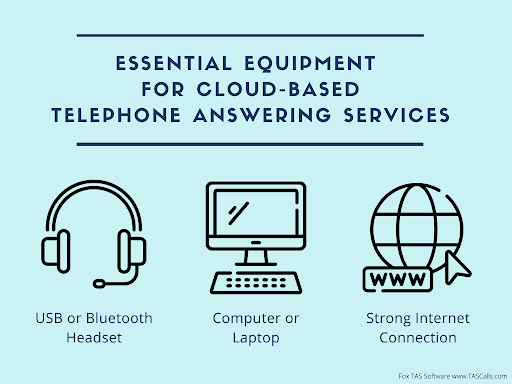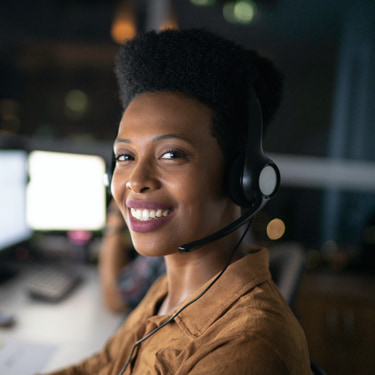All Categories
Featured
Table of Contents
- – Which Is The Best 6 Statistics That Prove Your ...
- – What Are The Best How To Answer The Phone Prof...
- – A Best Call Service: 24/7 Live Phone Answering...
- – Whats The Best Answering Service Operator: Wh...
- – Which Is Best What Is An Answering Service? C...
- – Who Is The Best Answering Service Faqs - Que...
Which Is The Best 6 Statistics That Prove Your Business Needs A Phone ... - Blog
This gadget and its successors were designed by Sava Jacobson, an electrical engineer with a private consulting business. While early answering devices used magnetic tape technology, most modern equipment utilizes strong state memory storage; some devices use a mix of both, with a solid-state circuit for the outgoing message and a cassette for the incoming messages.
"toll saving" listed below) (business call answering service). This is helpful if the owner is evaluating calls and does not want to speak to all callers. In any case after going, the calling party ought to be notified about the call having actually been addressed (most of the times this begins the charging), either by some remark of the operator, or by some welcoming message of the little bit, or dealt with to non-human callers (e.
This holds specifically for the Little bits with digitally kept welcoming messages or for earlier makers (prior to the rise of microcassettes) with an unique endless loop tape, different from a second cassette, devoted to recording. There have been answer-only gadgets without any recording capabilities, where the welcoming message had to notify callers of a state of existing unattainability, or e (virtual answering service).
What Are The Best How To Answer The Phone Professionally (With Examples) Brands To Buy

about accessibility hours. In taping Littles the welcoming generally contains an invite to leave a message "after the beep". A voice mail that utilizes a microcassette to tape messages On a dual-cassette answerphone, there is an outgoing cassette, which after the specified variety of rings plays a pre-recorded message to the caller.

Single-cassette answering makers consist of the outbound message at the beginning of the tape and inbound messages on the remaining space. They initially play the statement, then fast-forward to the next offered space for recording, then tape the caller's message. If there are many previous messages, fast-forwarding through them can trigger a considerable delay.
This beep is often referred to in the greeting message, asking for that the caller leave a message "after the beep". Little bits with digital storage for the tape-recorded messages do not show this delay, naturally. A little bit might provide a remote control facility, where the answerphone owner can sound the home number and, by going into a code on the remote telephone's keypad, can listen to taped messages, or delete them, even when away from home.
A Best Call Service: 24/7 Live Phone Answering Services For Small ...

Thereby the machine increases the number of rings after which it answers the call (usually by 2, resulting in four rings), if no unread messages are presently kept, however responses after the set number of rings (usually 2) if there are unread messages. This allows the owner to learn whether there are messages waiting; if there are none, the owner can hang up the phone on the, e.
Some makers likewise enable themselves to be remotely activated, if they have actually been switched off, by calling and letting the phone ring a certain a great deal of times (usually 10-15). Some provider abandon calls currently after a smaller sized number of rings, making remote activation difficult. In the early days of Littles an unique transmitter for DTMF tones (dual-tone multi-frequency signalling) was regionally required for push-button control, because the formerly used pulse dialling is not apt to convey proper signalling along an active connection, and the dual-tone multi-frequency signalling was carried out stepwise.
Any incoming call is not identifiable with regard to these homes in advance of going "off hook" by the terminal equipment. So after going off hook the calls need to be changed to proper devices and only the voice-type is immediately accessible to a human, however possibly, however should be routed to a LITTLE (e.
Whats The Best Answering Service Operator: What Is It? And How To ...
What if I informed you that you do not need to really get your gadget when responding to a customer call? Another person will. So practical, ideal? Responding to phone calls does not need somebody to be on the other end of the line. Effective automated phone systems can do the technique simply as effectively as a live agent and often even much better.
An automatic answering service or interactive voice reaction system is a phone system that communicates with callers without a live individual on the line - phone answering. When companies use this technology, clients can get the response to a concern about your company just by utilizing interactions established on a pre-programmed call flow.
Although live operators update the client service experience, many calls do not require human interaction. A basic documented message or guidelines on how a client can retrieve a piece of details normally resolves a caller's immediate need - phone call answering. Automated answering services are a simple and effective way to direct incoming calls to the best person.
Which Is Best What Is An Answering Service? Company
Notification that when you call a company, either for assistance or item query, the very first thing you will hear is a pre-recorded voice welcoming and a series of alternatives like press 1 for client service, press 2 for queries, and so on. The pre-recorded choices branch out to other options depending upon the consumer's choice.
The phone tree system assists direct callers to the right individual or department utilizing the keypad on a mobile phone. In some circumstances, callers can use their voices. It deserves noting that auto-attendant choices aren't restricted to the ten numbers on a phone's keypad. As soon as the caller has actually chosen their very first option, you can create a multi-level auto-attendant that uses sub-menus to direct the caller to the right sort of help.
The caller does not have to communicate with a person if the auto-attendant phone system can manage their issue. The automatic service can route callers to an employee if they reach a "dead end" and require assistance from a live agent. It is costly to work with an operator or executive assistant.
Who Is The Best Answering Service Faqs - Questions & Answers Provider
Automated answering services, on the other hand, are significantly less pricey and provide significant cost savings at an average of $200-$420/month. Even if you do not have actually dedicated personnel to deal with call routing and management, an automated answering service improves efficiency by enabling your team to focus on their strengths so they can more efficiently spend their time on the phone.
A sales lead routed to client service is a lost shot. If a client who has item concerns reaches the incorrect department or gets incomplete answers from well-meaning staff members who are less trained to handle a particular kind of concern, it can be a cause of aggravation and dissatisfaction. An automatic answering system can reduce the number of misrouted calls, thereby assisting your workers make much better usage of their phone time while releasing up time in their calendar for other tasks.
With Automated Answering Systems, you can produce a customized experience for both your staff and your callers. Make a recording of your primary greeting, and just upgrade it routinely to show what is going on in your company. You can develop as lots of departments or menu alternatives as you desire.
Table of Contents
- – Which Is The Best 6 Statistics That Prove Your ...
- – What Are The Best How To Answer The Phone Prof...
- – A Best Call Service: 24/7 Live Phone Answering...
- – Whats The Best Answering Service Operator: Wh...
- – Which Is Best What Is An Answering Service? C...
- – Who Is The Best Answering Service Faqs - Que...
Latest Posts
Fast After Hours Answering Service – Ballarat
Exceptional Live Phone Answering
Expert Emergency Call Answering Service – VIC 3220
More
Latest Posts
Fast After Hours Answering Service – Ballarat
Exceptional Live Phone Answering
Expert Emergency Call Answering Service – VIC 3220